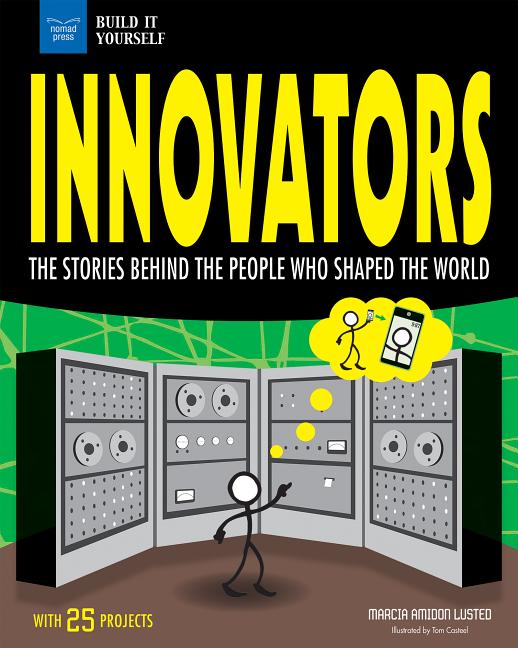Book Description
for Innovators by Marcia Amidon Lusted and Tom Casteel
From the Publisher
Most people have heard of Thomas Edison, Steve Jobs, and Mark Zuckerberg, but how about Daniel Hale Williams, Mae Jemison, and Mary Anderson? The world owes a lot to the unsung heroes of innovation, names that many people don’t know, though we use their inventions and improvements on a daily basis. These are people who turned their ideas into ways to make the world a better place through advances in health, technology, food science, and discovery!
In Innovators: The Stories Behind the People Who Shaped the World with 25 Projects, readers ages 9 to 12 learn about the products, processes, and improvements people have made to create the reality in which we live. For example, in 1938, Ruth Wakefield got the idea to add bits of chocolate to her cookies and invented Toll House chocolate chip cookies. Innovators also tackle many serious problems, such as Virginia Apgar who designed a test for newborns to determine how healthy they were. The Apgar test is still being used in hospitals today. And in 2012, at the age of just 15, Jack Andraka developed a speedy and cheap method to detect pancreatic cancer early, which has the potential to save thousands of people from several deadly cancers.
Being innovative means thinking creatively and critically to solve problems and find improvements. People of any age can be innovators—all it takes is an open mind, curiosity, and a desire to come up with ideas! Hands-on activities provide practical applications for learning the engineering design process and include learning how to send messages in Morse Code, creating a homemade version of Silly Putty, and figuring out how to make a solar-powered oven. Innovators incorporates a digital learning experience by providing links to primary sources, videos, and relevant websites for deeper, independent learning and inspiration.
In Innovators: The Stories Behind the People Who Shaped the World with 25 Projects, readers ages 9 to 12 learn about the products, processes, and improvements people have made to create the reality in which we live. For example, in 1938, Ruth Wakefield got the idea to add bits of chocolate to her cookies and invented Toll House chocolate chip cookies. Innovators also tackle many serious problems, such as Virginia Apgar who designed a test for newborns to determine how healthy they were. The Apgar test is still being used in hospitals today. And in 2012, at the age of just 15, Jack Andraka developed a speedy and cheap method to detect pancreatic cancer early, which has the potential to save thousands of people from several deadly cancers.
Being innovative means thinking creatively and critically to solve problems and find improvements. People of any age can be innovators—all it takes is an open mind, curiosity, and a desire to come up with ideas! Hands-on activities provide practical applications for learning the engineering design process and include learning how to send messages in Morse Code, creating a homemade version of Silly Putty, and figuring out how to make a solar-powered oven. Innovators incorporates a digital learning experience by providing links to primary sources, videos, and relevant websites for deeper, independent learning and inspiration.
Publisher description retrieved from Google Books.


